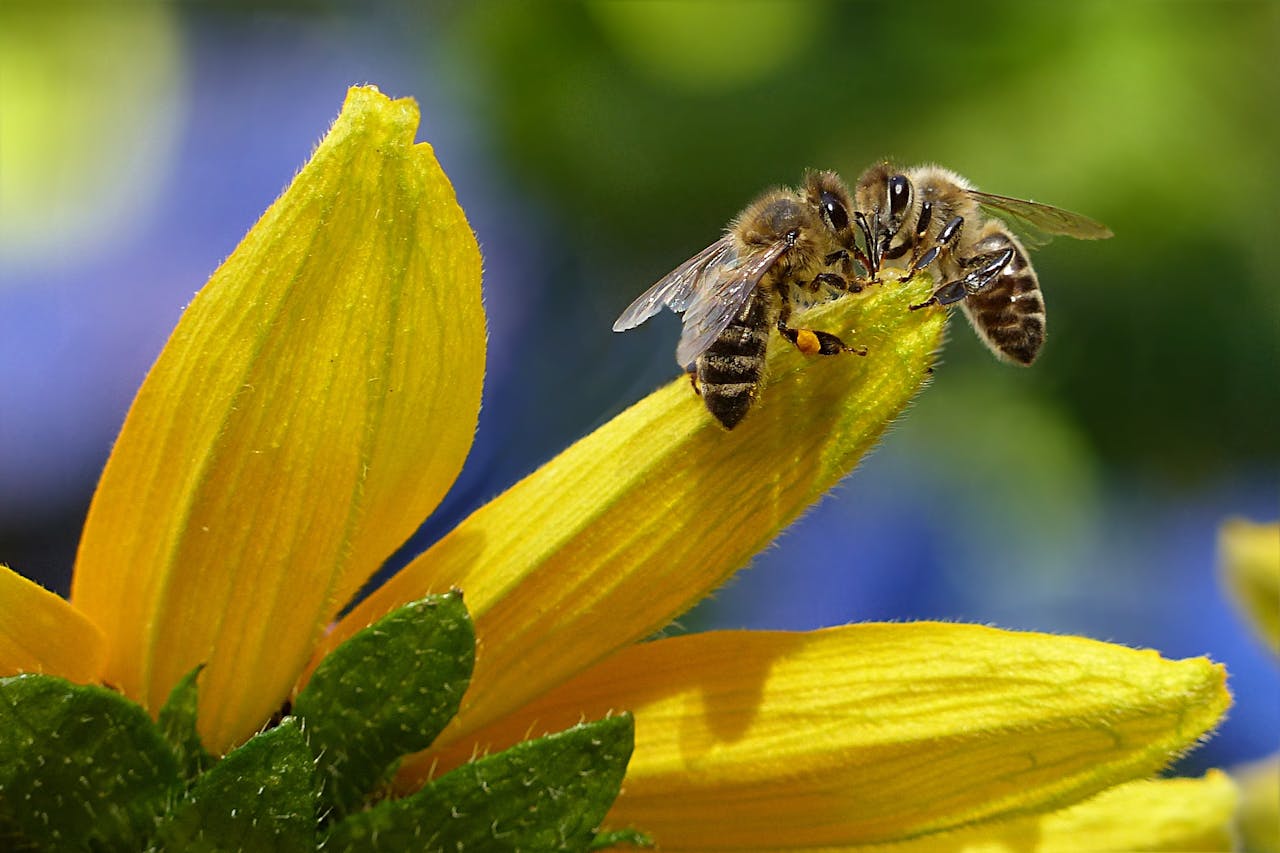The Perfect Architects: Honeycomb Geometry
Honey bees are nature’s architects, designing intricate honeycombs with a precision that has fascinated scientists and mathematicians alike. Each cell in the honeycomb is a perfect hexagon, a shape that allows bees to maximize space while using the least amount of wax. This efficiency isn’t just a random occurrence—it’s a result of millions of years of evolution. The hexagonal pattern is the most efficient way to fill a space with the least material, providing strength and durability to the structure. These honeycomb cells serve multiple purposes: they store honey and pollen, house larvae, and regulate temperature within the hive. The engineering prowess of honey bees shows us how nature often finds the most elegant solutions to complex problems.
The Dance of Communication: Waggle Dance
One of the most remarkable behaviors of honey bees is their ability to communicate through the “waggle dance.” When a forager bee finds a rich source of nectar or pollen, she returns to the hive and performs a specific dance on the honeycomb. The angle and duration of her waggle indicate the direction and distance of the food source relative to the sun. This sophisticated method of communication allows bees to share precise information with their hive mates, ensuring the colony can efficiently exploit resources. The waggle dance is a testament to the complex social structure and intelligence of honey bees, showcasing their ability to work collectively for the greater good of the hive.
The Unsung Heroes: Pollination Powerhouses
Honey bees are often celebrated for their honey, but their role as pollinators is what makes them truly indispensable. As they move from flower to flower in search of nectar, bees inadvertently transfer pollen, facilitating the reproduction of countless plant species. This process is vital not just for the survival of wild plants but also for many of the crops that make up our diet. Fruits, vegetables, nuts, and even coffee rely on bee pollination. Without bees, our food supply would look drastically different, and ecosystems would struggle to maintain balance. The humble honey bee plays a crucial role in sustaining biodiversity and feeding the world, making them one of the most important creatures on our planet.

